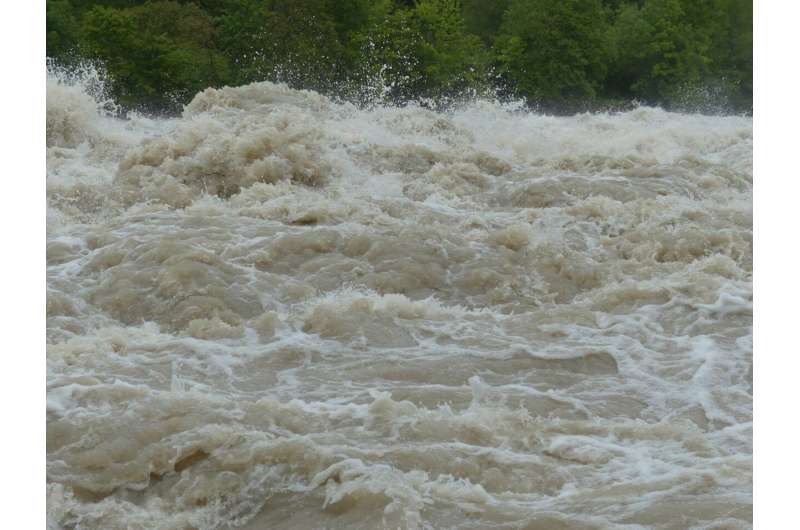Credit: Pixabay/CC0 Public Domain
Following extensive flooding in eastern Australia the Food Safety Information Council is warning people not to take food safety risks during and after flood.
Lydia Buchtmann, the Council's Communication Director, said that floodwater can be contaminated with sewage, agricultural and industrial waste, and other substances that can cause illness so there is a danger that any food, surfaces and cooking utensils that have come into contact with floodwater might be contaminated.
"Spills and sewage discharges can also contaminate water supplies and food gardens. If in doubt throw out any food that might not be safe to eat and follow these simple steps:
- Throw out food that has come into contact with floodwater or has an unusual odor, color or texture. Do not taste or cook it.
- Check canned and unopened bottled food and throw out any cans that are dented, swollen or damaged. For cans that appear useable remove the label and thoroughly wash the outside of the can with drinking-quality water, sanitize the can in bleach for 1 minute, then rinse in drinking-quality water re-label the can with a waterproof pen.
- Carefully check dishes, pots, pans, cutlery and kitchen equipment that might have been in contact with floodwater. Throw away damaged or cracked items, items made from porous material such as wood, plastic or rubber including wooden chopping boards as they cannot be adequately sanitized.
- Wash utensils and surfaces in hot, soapy, drinking-quality water. Take apart and clean the non-electrical pieces of any kitchen equipment that can be safety taken apart and then rinse in clean, hot water.
- Sanitize silverware, metal utensils, pots, pans and kitchen equipment in pieces by boiling in water for 10 minutes. Sanitize dishes by immersing glass, porcelain, china and enamel-ware for 10 minutes in a disinfecting solution of 1 tablespoon of chlorine bleach per 2 liters of warm water. Clean cupboards and counters with hot soapy water then rinse with a chlorine bleach solution before storing dishes or food.
- Air dry items because towels might have been splashed with contaminated water.
- Commercial and most domestic dishwashers are capable of sanitizing all eating and cooking utensils as part of their normal cycle
- Vegetable gardens can take a month to become suitable for harvest after flood or sewage discharge. Discard all leafy green produce or damaged vine or dropped tree fruits. After 1 month, wash other vegetables then sanitize in a weak bleach solution of 1 tablespoons bleach to 2 liters of water. Then rinse in drinking-quality water, peel and use.
"Finally, after a flood tap water and private water supplies such as from tanks, wells and bores sometimes might not be safe to drink and use for cooking and cleaning so monitor public announcements and those from the local water supplier to know if tap water is safe to use. If the water is unsafe, use only bottled, boiled or treated water—in that order of preference—for drinking, cooking or preparing food, washing utensils and surfaces, brushing teeth, hand washing, making ice, and bathing," Ms Buchtmann concluded.
More information: Floods – what to do after a flood: foodsafety.asn.au/floods-what-to-do-after-a-flood/
Provided by Food Safety Information Council
























